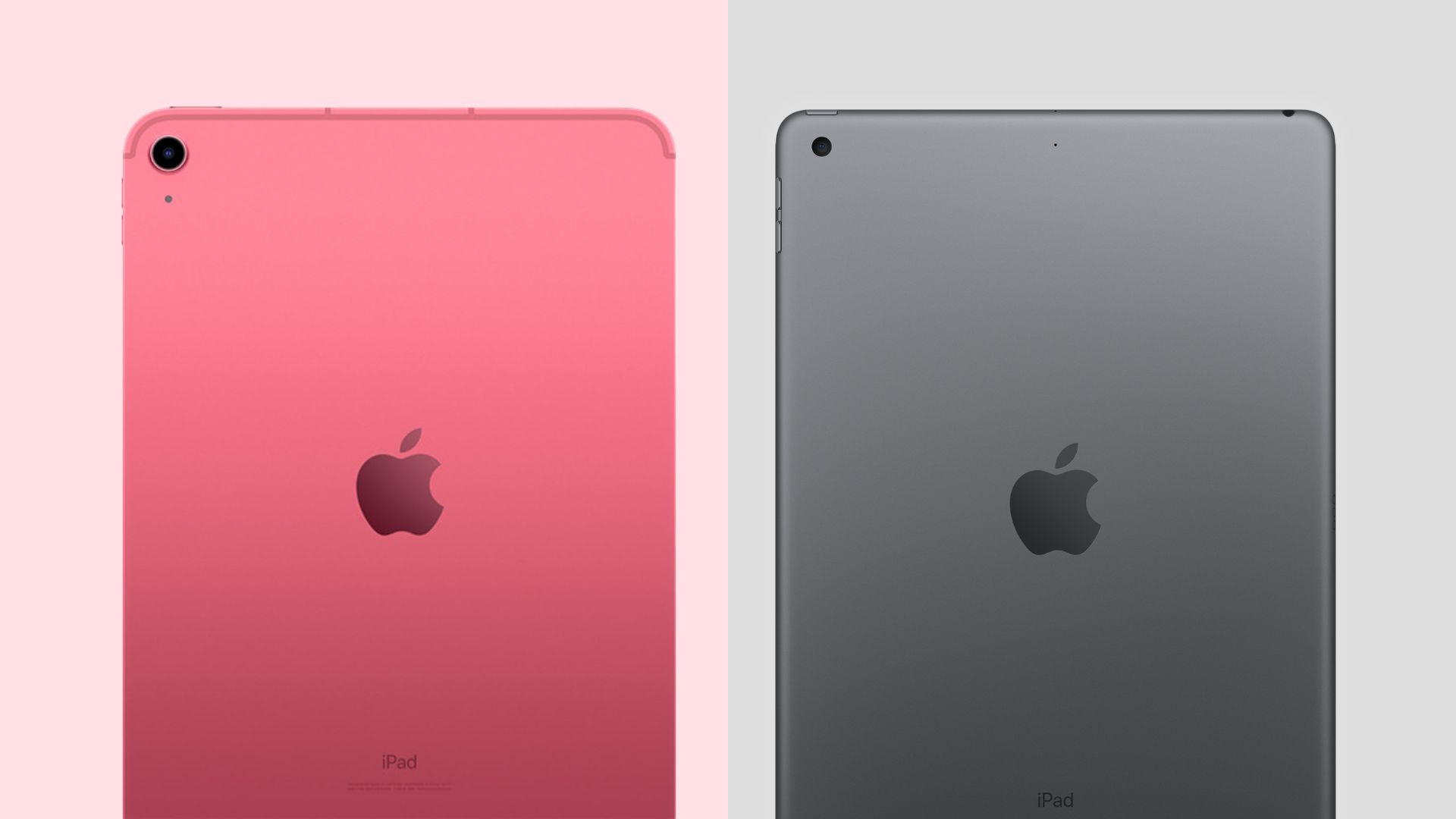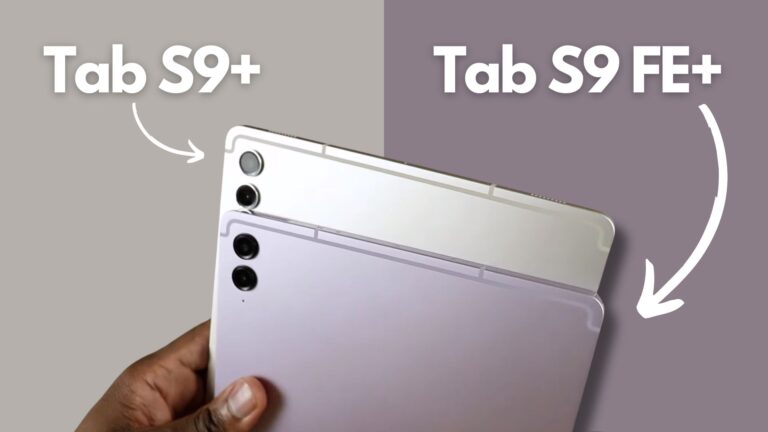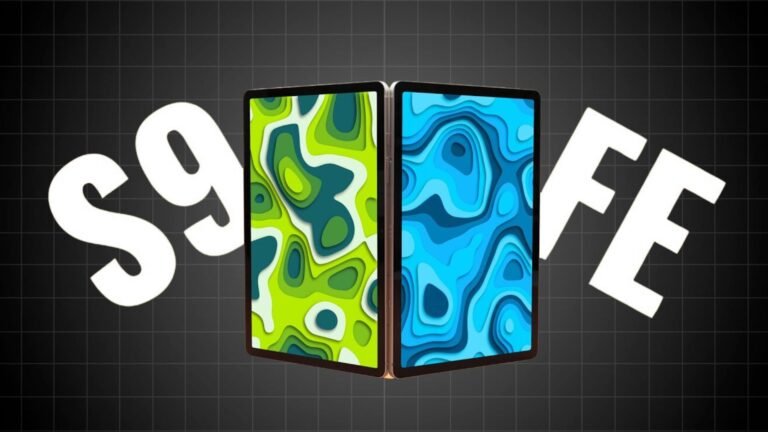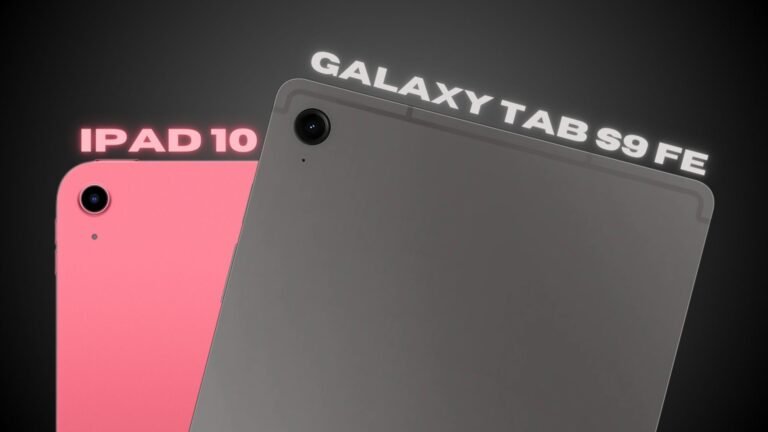Since the iPad 10 was announced, I have been eagerly awaiting for this comparison because I genuinely think the iPad 9 is a fantastic entry-level iPad, and wanted to see if the iPad 10 would simply take things to the next level. Therefore, for testing purposes, I have used both iPads for gaming, web browsing, video viewing, social media, and the standard office tasks I perform for running my blog.
Read: iPad 9 Review
Read: iPad 10 Review
iPad 10 vs iPad 9: Design

The iPad 10 now has the same design as the rest of the current iPad lineup, with rounded corners, squared-off edges, and a USB-C port in place of the lightning port that is present on the outdated iPad 9. So you can now use a variety of USB-C hubs, and even though it lacks a Thunderbolt port, you can still connect an external display that supports 4K/30 FPS.
The headphone jack, which everyone loves in the iPad 9 because you can charge and listen to music at the same time, is the only feature that is missing from the iPad 10. But don’t worry, you can always use a 3.5 millimetre adapter or USB-C headphones with the iPad 10.
Both iPads use Touch ID for biometric authentication. The iPad 10 uses the more recent implementation, where Touch ID is built into the power button, while the iPad 9 still has it on the home button. Both are accurate and functional, but I obviously prefer the iPad 10 because the iPad 9’s home button feels outdated.
iPad 10 vs iPad 9: Display

Although there are slight size differences, none of them will have a significant impact on portability. The iPad 10’s display is now noticeably bigger. Although it has a higher resolution, the display is still not completely laminated.
I have to say that you don’t really notice it for the vast majority of the things that you do.
Although we only have a 60 Hz display and the animations and scrolling aren’t as smooth as they are on the iPad Pro, the displays are still excellent for an entry-level iPad and are suitable for watching videos, browsing the web, using productivity apps, and even playing games.
iPad 10 vs iPad 9: Cameras

We now have a rear-facing camera with higher resolution and a camera system that can record slow motion in 1080P at 120 or 240 frames per second while also recording 4K at up to 60 frames per second. Additionally, these are really nice upgrades if you use the iPad camera for video.
The front-facing camera was moved from the short edge to the long edge, which is the most significant change. Therefore, if you’re using the iPad 10 in landscape mode and you’re on a video call, you will now be framed precisely in the centre and it won’t appear as though you’re set off to the side.
iPad 10 vs iPad 9: Speakers
The speakers were also updated; unlike the iPad 9, which had both speakers on the bottom, the iPad 10 has one speaker on each side. Now that you have much better audio, you can use it to simulate surround sound when playing games like PUBG.
iPad 10 vs iPad 9: Keyboard & Stylus

The first-generation Apple Pencil is compatible with iPad 9 because it has a lightning port. But I’ve never really liked having to put it into the lightning port to charge it. There is always a chance that it could break, in my opinion.
In spite of having a USB-C port and squared-off edges, the iPad 10 is incompatible with the second-generation pencil. It’s still compatible with this first-generation pencil. Therefore, you must purchase a $9 lightning-to-USB-C adapter from Apple to charge the pencil.

There are numerous third-party keyboard case options available for both iPads. A new Magic Keyboard Folio was also created by Apple for the iPad 10. I adore the new Magic Keyboard’s features and design, but at $250, it seems incredibly pricey to someone looking for the least expensive iPad.
iPad 10 vs iPad 9: Performance

Apple did upgrade the chip in the iPad 10, so we’re going from the A13 to the A14. Both single-core and multi-core performance are improved in terms of benchmarks. With iPad 9, we receive significantly improved GPU performance in addition to 4GB of RAM in place of 3GB.
For most users, this isn’t really gonna make a major difference, but the iPad 10 is better suited for things like 4K video editing, and even if you don’t work with video, it means that it’ll have more headroom in terms of processing power.
Most of the time, when it comes to gaming, both iPads performed admirably. So switching from the A13 to the A14 hasn’t really resulted in a noticeable improvement. Again, though, the A14’s extra headroom means that the iPad 10 will continue to perform better for a longer period of time as games become more demanding.
Pricing & Conclusion
The iPad 9 costs $330, and and the iPad 10 is $450, so we’re already looking at $120 difference, and if you buy from e-commerce website, then you can get iPad 9 for $300.
The only drawback is that you only get 64GB of storage for that price; a 256GB version costs an additional $150, which is very disappointing in my opinion. However, 64GB storage is more than enough if you don’t need a lot of games or apps, don’t store photos on your iPad, and primarily use it for streaming or web-based applications.
I don’t really understand the logic behind the iPad 10’s current pricing. It’s significantly more expensive than the iPad 9 for a set of features that are nice to have but not necessary for someone who only wants the base iPad.
Although the new keyboard has a fantastic design, it seems expensive for its target audience, and its compatibility with the Apple Pencil is just strange. Therefore, I believe that making the iPad 10 compatible with both first and second-generation pencils would have been a better choice.
So if you’re looking for the better value in my opinion, that’s the iPad 9. If an updated design, a larger and higher-resolution display, a more powerful chip, a USB-C port, and then Wi-Fi 6 5G support and Bluetooth 5.2 are worth the price difference for you, then you should go ahead and grab an iPad 10.






